Men vs. Women: The Green Gender Gap
Mowing, digging, cutting = essence of eco yard care
Dear Yardener,
Yes, gender and the American yard is a thing. And it’s a thing that, among other things, gets in the way of transforming lawn-dominated yards into ecological landscapes. Ecological landscaping requires yard work skills — mowing, digging, cutting — and a nurturing mindset.
For married couple households — still the largest U.S. household category (46%) according to the 2020 census — managing their yards more ecologically means not only adopting new skills and a new mindset, but — often — a new division of labor.
The joy of mowing
Men generally spend about twice as much time doing garden and lawn care in their non-working time than women, according to the Bureau of Labor Statistics’ American Time Use Survey. (Note: This study used the terms “woman” and “man” and did not provide other gender options to respondents.) So, it’s mostly men who care for American yards, with much of that time spent mowing. And many — at least a quarter, according to one large, national lawn mowing survey — just love mowing.
Columnist Theodore Johnson explains how mowing his lawn gives him a sense of making a difference and creates community:
In a world of keyboards and video conferencing and artificial light, lawnmowing is where I get to commune with nature and get my hands dirty, break a sweat, do some “real” work. It is sometimes hard to see the difference you make in the world, but lawn care provides immediate feedback, as is often the case with jobs that require you to shower after work instead of before.
And the “being outside” has a social importance: It announces your presence, marks your place. It isn’t an exaggeration to say that roughly 98 percent of what I know about my neighbors was learned while mowing the lawn. — The Washington Post
Having mown for the first time only last year (yes), I get it. It was meditative. It got me to spend a long time in the yard, looking closely at the plants there. And the resulting clipped turf made our emerging meadow and native plant beds look soooo much more intentional.
The lawncare mindset
Unfortunately, the lawn care industry (a $62 billion market in the U.S. in 2024, and growing) has encouraged competitiveness around lawns, promoting an ideal of a shorn, bright-green monoculture that is maintained with fertilizer, pesticides, and plenty of water. This has led to a competitive, dominating mindset, as described by one Austin blogger transforming his yard from lawn-dominated to biodiverse:
Yardwork seems so very Male America, I think, and akin in many ways to “landscaping.” It’s all about lawns, lawns and more lawns. It’s about fertilizing and applying pesticides. Trimming and bagging.
Gardening, on the other hand, implies that one has a more intimate connection with the property. It means nurturing, pruning, weeding, planting, digging, growing and getting down on your knees in the middle of it all to find a praying mantis egg case growing amongst the vines. Gardening is still hard work, arguably more work than yardwork. It pricks me, makes me sweat, gives me sore muscles, and draws out blisters.
But gardening implies connection. Yardwork implies domination. — The Grackle (blog)
I’d argue that ecological landscaping is a middle path — more nurturing than yardwork but less coddling than traditional gardening. Here’s an example:
Reminder not to coddle wild plants
Dear Heather, My problem is the plow. I live in Maine with a long driveway (too long to shovel or even snowblow). I'm working to convert as much of my lawn to gardens as possible, but I need a place for the plow to push all the snow to the side of the drive. Are there herbaceous plants I could use that can be sheared down by the plow every year? – Tina, Maine
Good news: Native plants are resilient! The plow — or you — can mow down summer-blooming native herbaceous perennials in spring and they will bounce back in time to flower. In fact, most ecological landscapers periodically mow meadows in spring to keep woody plants from taking over. Otherwise, meadows in the northeast will eventually become forest.
The salt content of the melted snow along your drive is the more serious issue, if they salt the roads in your town. For ideas, check the “salt tolerant” and “summer blooming” filters in the Native Plant Trust’s Plant Finder. Common yarrow, common milkweed, woodland sunflower, sundrops, and narrowleaf mountain mint are great options native to Maine’s Acadian Plains and Hills ecoregion, for example.
Men mow. Women… take care of kids.
Back to the yard care gender gap: It’s widest in households with children. Men with kids under six spend more than five times as much time doing garden or lawn care as women in similar households — about 16 minutes per day — exactly the same as men with no kids. In contrast, women in such households spend an average three minutes per day — i.e., nothing — doing garden or lawn care, almost 70% less than women with no kids under 18.
When the household’s youngest child reaches six, women do a tad more garden and yard care (four minutes) and men do about a third less (11 minutes). I’m imagining some guys outsource lawn maintenance so they can spend weekends coaching soccer rather than mowing the lawn, but that’s just conjecture.
The BLS doesn’t look at household type, only gender, but studies of household work in same-sex couples suggests a similar pattern, a dramatic shift in the division of labor when same-sex couples have children, just not along gender lines. One member of the couple takes on the bulk of childcare responsibilities. And I’m guessing the other usually cares for the yard.
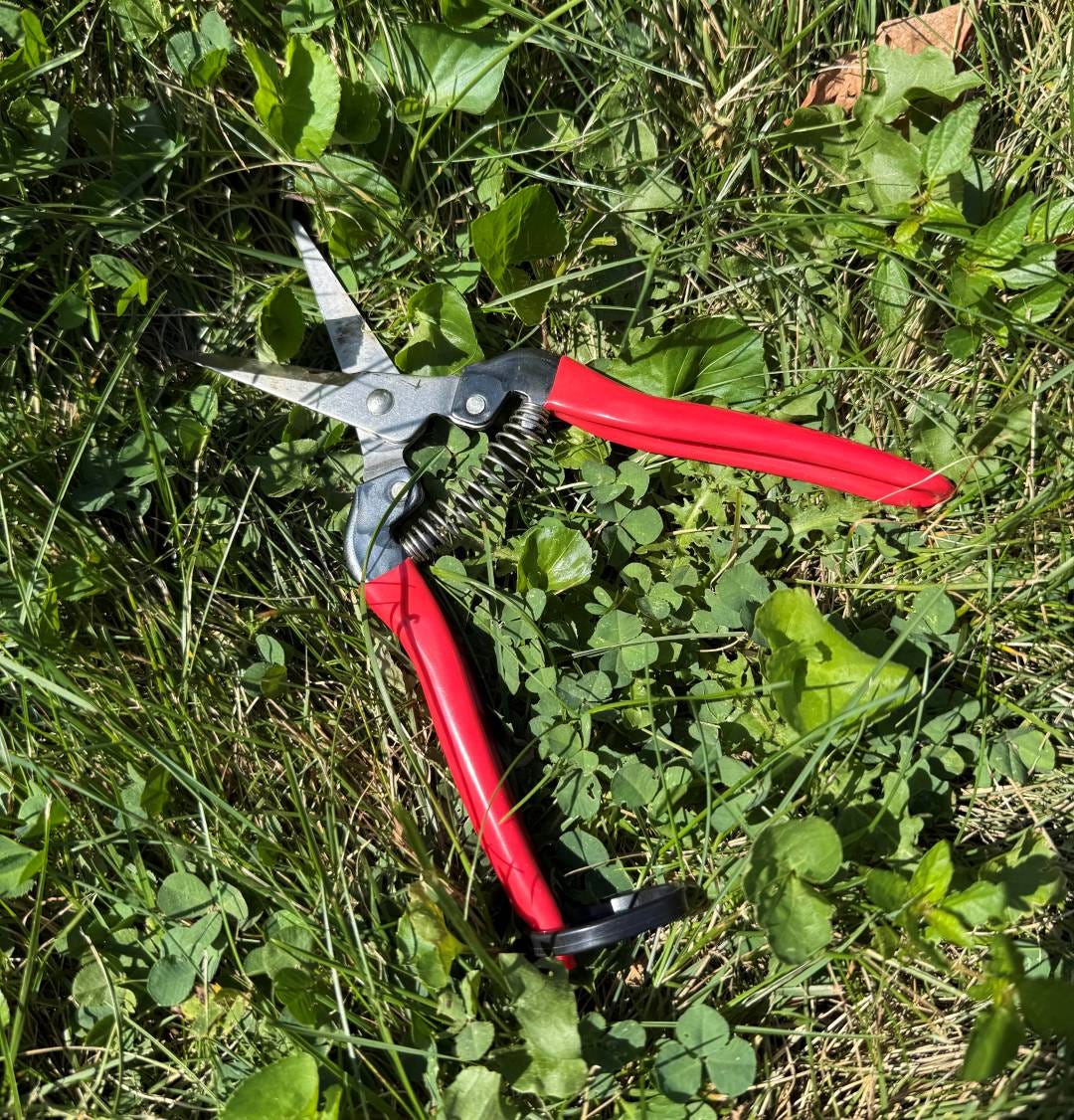
Who spends the most time on garden and lawn care? People who are not employed and don’t have kids under 18 — retired people, among others. Men in this group spend an average of 26 minutes daily throughout the year doing garden and lawn care, whereas such women spend only about 14 minutes.
Is ecological landscape work different?
Most of my readers are well along the journey toward a more ecological yard. I’m wondering how this has affected the division of labor in their households. In our household, for example, we share the work — though Pete tells me he does most of it. “You don’t mow. You don’t dig.” True. I also don’t set up drip hoses for establishing plants. I do cut and pull invasives. And I wander around, contemplating what’s working, what’s not working, what’s next, so I’m also gaining the 12 Benefits of Gardening from Recent Research.
Who does the yardwork in your household? Please take a moment to tell me in the comments below. (I love comments!)
— Heather
Wow! Partnering in the Transformation
Many couples I’ve spoken with who are transforming their yards are partnering on the effort, like the couple Lexie Glass and her husband, Evan Hursley. They created the gorgeous native garden in Los Angeles pictured above and featured on the Theodore Payne Foundation’s yard tour. Here’s what it looked like before:

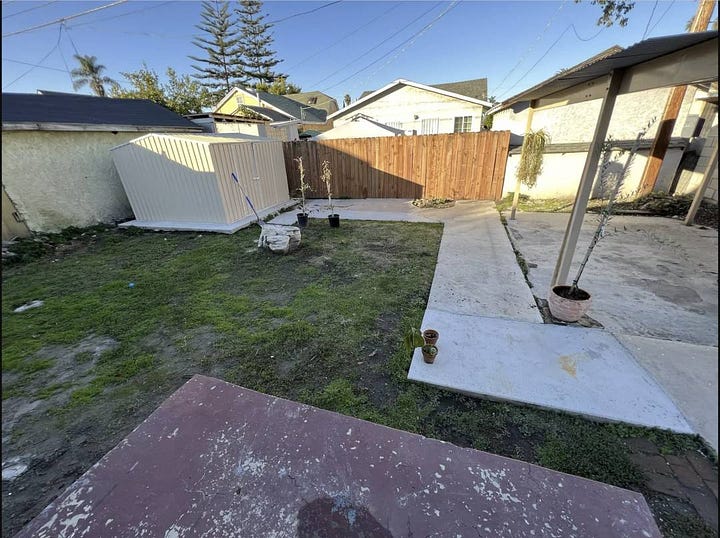
Glass and Hursley brought deep design expertise to the project, if not ecological landscaping knowledge. They collaborated on the hard labor, the planting, even the research and planning.
“Evan and I spent many Saturday mornings, eating breakfast and watching the native garden design lectures during our planning phase,” Glass says. — LA Times
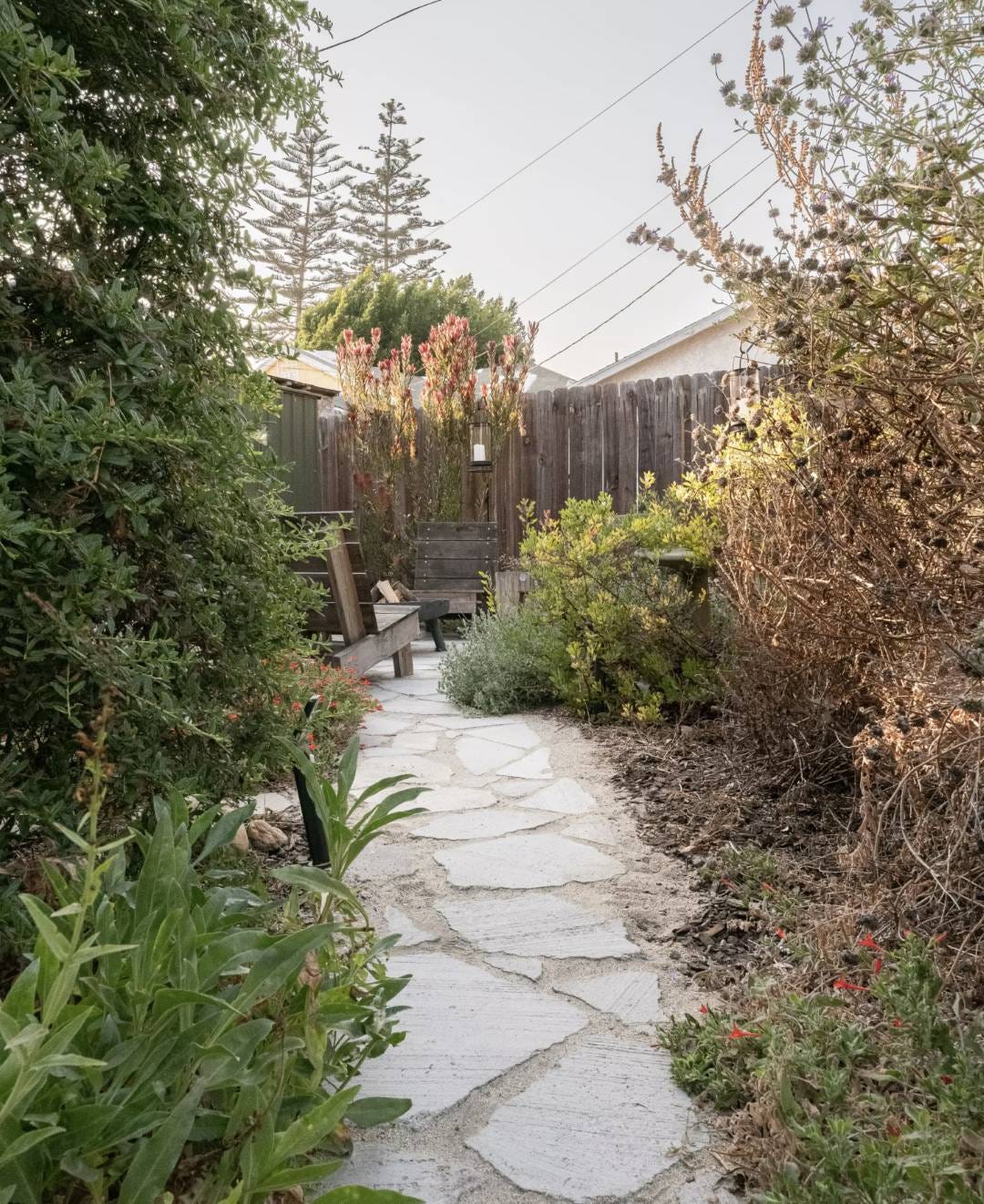
We added lots of fragrant varieties to the front yard to greet us and our guests home, but also to hopefully spark intrigue with neighbors as they walk by,” Glass says. “We hoped they would enjoy both the site and the smells of native plants and begin to appreciate native plants if they didn’t already.”
Glass and Hursley planted 250 mostly one-gallon plants, 80% of which are native to California, while the others are drought-tolerant plants from countries with similar climates. — LA Times
If you’re embarking on your yard transformation, especially if you’re in southern California, I highly recommend reading Lisa Boone’s excellent case study of Glass and Hursley’s design process in the LA Times.
Those further along in the journey, spill the tea in the comments below about who’s doing what…


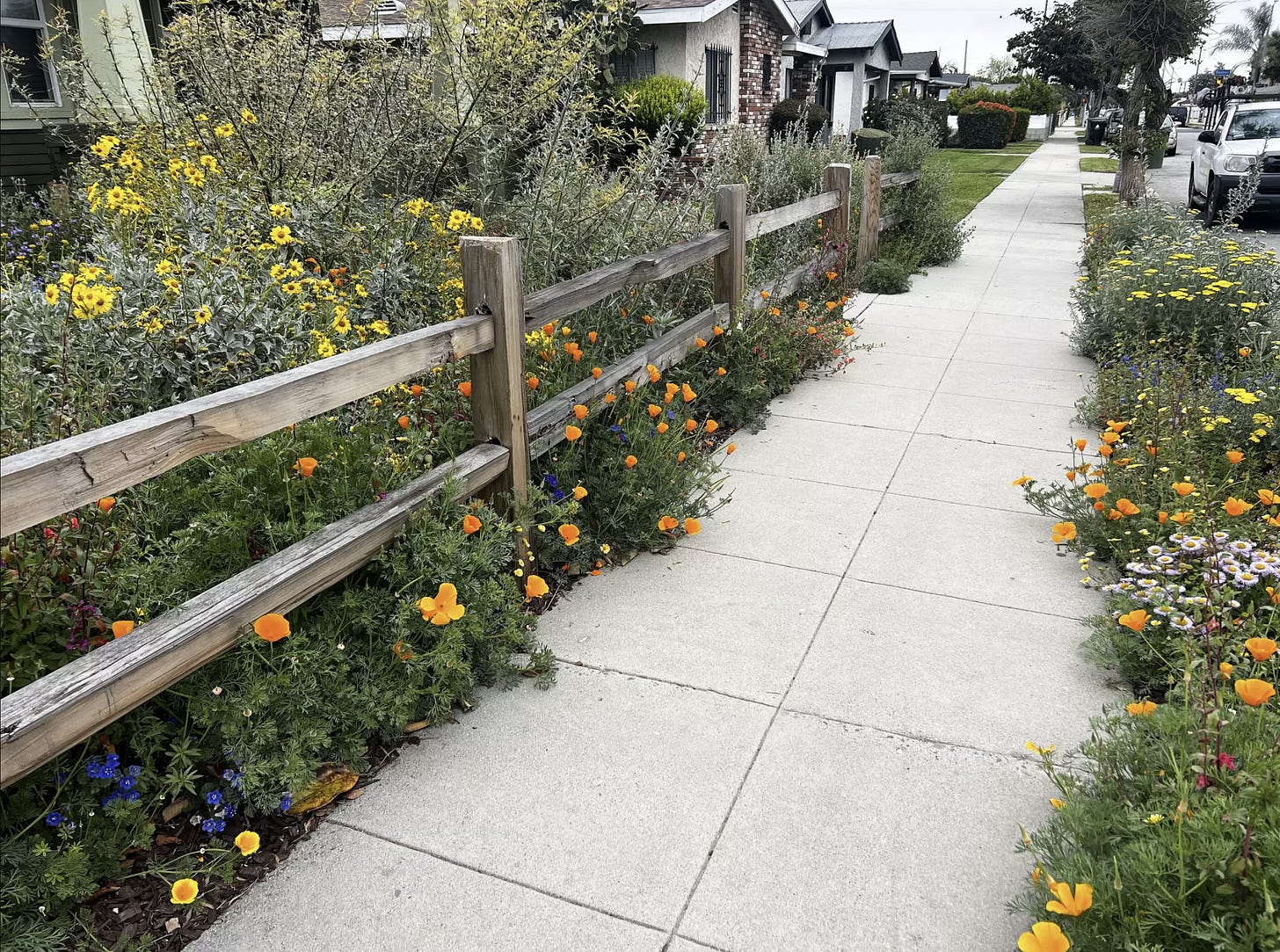

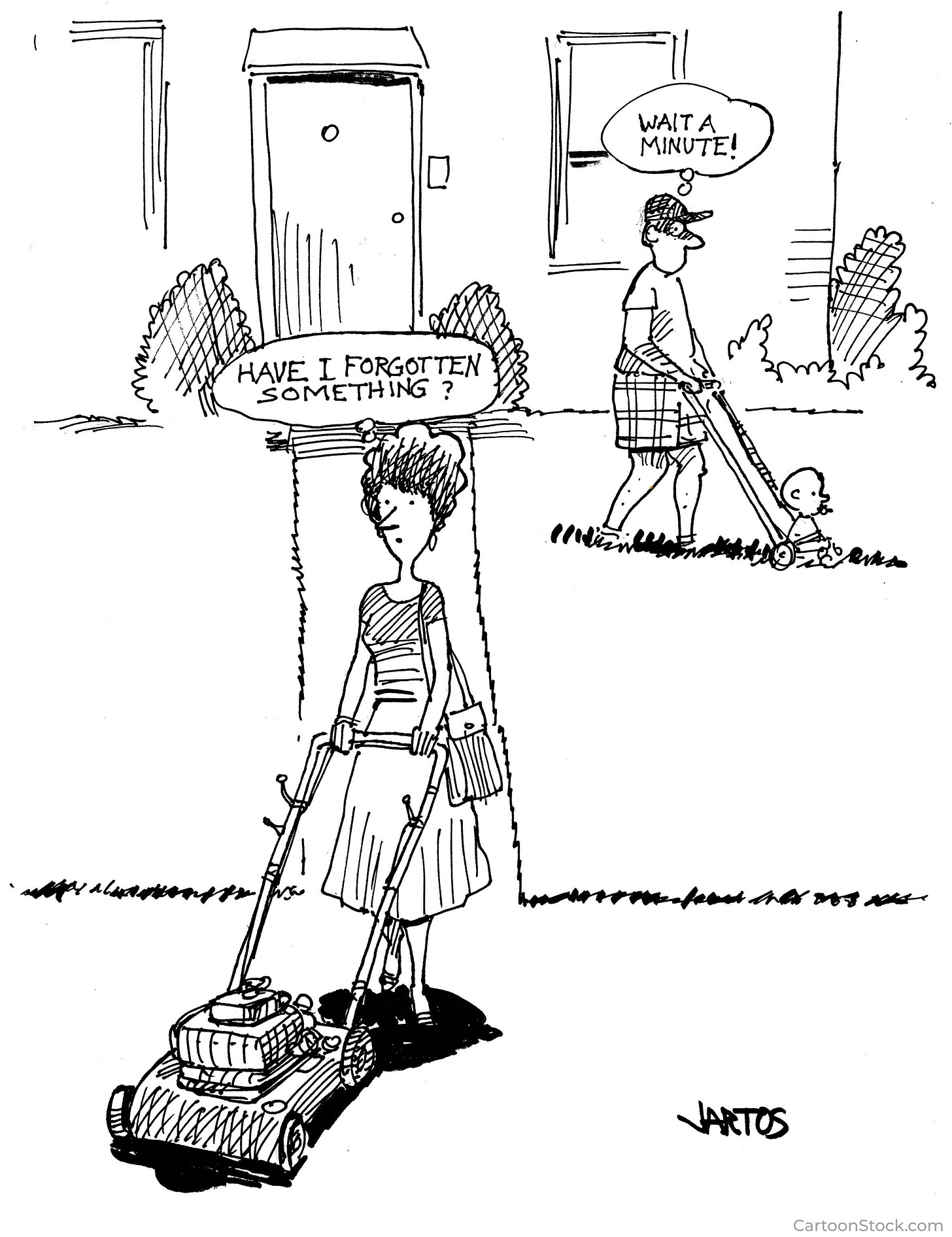
In our home, this retired couple, seems to follow your views. The male uses mower, trimmer, blower and an occasional spade. He has pulled weeds off and on as well. The female at our house does all the gardening chores- she is more interested and dare I say knowledgeable.
I’m taking a landscape design class offered by our state university extension program. Out of 40 students, 39 are women!